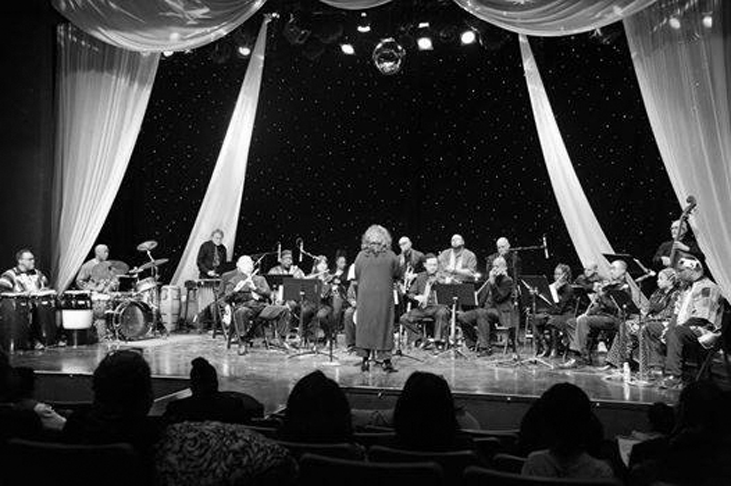
The DuSable Museum, in Washington Park, celebrates its namesake frequently, but celebrated him particularly loudly last Friday night. “Suite DuSable: A Vision of Faith,” an hour-long orchestral piece composed and conducted by Renée Baker, served as a kickoff to celebrations of Jean Baptiste Pointe DuSable, founder of Chicago. Integrated with the museum’s ongoing curriculum development project, the piece paid tribute to DuSable through creative jazz music, an artistic embodiment rather than a literal narration.
The piece is part of a series of public events the DuSable is presenting in conjunction with new units on African-American history for Illinois public schools. In 2005, a state law was passed to put more African-American history in public schools, and the Illinois Amistad Commission was formed to create curricular units and accompanying public events. The DuSable is a major partner in the Amistad Commission’s projects, and has worked on developing curriculum units and public programming in conjunction with the Amistad Commission, according to Pemon Rami, the museum’s director of educational services and public programs.
“Suite DuSable,” combined with Sunday’s “DuSable Day,” was one of these events. Recordings from the concert will be available for teachers to use when teaching classes about DuSable, but the concert was clearly meant to reach an audience on its own.
Jazz might seem an odd accompaniment to mandated curricular reform, but the piece—performed by the Chicago Modern Orchestra Project and members of the Association for Advancement of Creative Musicians—conveyed DuSable’s historic journey in swells of sound. The performance began with hand drums, evoking DuSable’s home of Haiti. As Baker walked onstage, she cued a jazzy trumpet solo. This was soon followed by a vocal duet with piano accompaniment, one of the piece’s few uses of words.
Baker later explained that the duet represented the voice of DuSable’s dead mother, but with phrases like “Are you getting the message?” and “Hear me now,” it seemed equally addressed to the audience. The trumpet players went out into the crowd in the climax of the piece, which Baker later explained represented DuSable’s arrival in New Orleans.
As the trumpeters returned to the stage, they and the conductor were dancing. Chaotic improvisation alternated with bursts of unison rhythm before the hand drums returned, recalling the opening. The piece reached its conclusion, another carefully controlled cacophony, with textures that let the ensemble members improvise but remain under Baker’s control. It was after several rounds of applause that Baker spoke on the piece. She explained the references to DuSable’s mother’s voice and his arrival in New Orleans, his entry point to North America, after which he found the “stinky swamp” that is now Chicago. (“Luckily not during winter,” she joked.) Although DuSable later moved to present-day Missouri and died there, the piece doesn’t end where his life ends; it celebrates his legacy.
Asked why she chose to present the explanation after the piece rather than before, Baker said she wanted the audience not to listen for the specifics of DuSable’s route in the music, “but to follow the sonic journey first. When you attend an art lecture, you see the work first and then you get to hear various schools of thought on what, when, why, and how the presenters come to understand what the artist meant.” The piece provided impressions of DuSable’s travels, but it wasn’t a history book. Exactly which waterways DuSable traveled wasn’t as important as the impact of his journey.
